Sleek, accurate & affordable: A review of the RingConn smart ring
RingConn
Pros
- Excellent recovery statistics accuracy
- Comfortable and stylish design with multiple size options
- Impressive battery life and comes with a portable charging case
- Highly responsive customer support and active community engagement
- No monthly subscription fees and competitive pricing
Cons
- Prone to scratching
- Lacks precision in heart rate measurement during activities
In the ever-evolving world of technology, innovation is the name of the game. As we strive to make our lives more convenient, we’ve seen the rise of smart devices that aim to streamline our daily routines. From smartphones to smartwatches, these devices have become an integral part of our lives. But what if I told you that the next big thing in smart technology is a lot smaller than you might think? Enter the RingConn.
The smart ring market has been relatively quiet as compared to other wearable tech, with few players making significant strides. The Oura Ring has been a notable exception, carving out a niche for itself with its focus on health and wellness tracking. However, the entry of RingConn and a few other options signals a shift in the landscape. The competition is heating up, and it’s clear that the smart ring market is on the cusp of a major transformation.
In this review, I will delve into the features, benefits, and potential drawbacks of RingConn. I’ll explore how it works and what it can and can’t do. I’ll also compare it to its main competitor, the Oura Ring,
RingConn smart ring review: Design, hardware
Look & feel
As soon as I unboxed my RingConn smart ring, I was struck by its straightforward, functional design. The premium presentation box it arrived in underscored the meticulous care and precision that has gone into crafting this device. Available in three metal colors – gold, silver, and black – the RingConn doesn’t try to be overly stylish; instead, it focuses on serving its purpose as efficiently as possible.
The outer-square, inner-circle design gives the ring an exclusive yet minimalistic look, while also ensuring maximum comfort. Weighing only between 3 and 5 grams depending on the size, you hardly notice you’re wearing it. It’s discreet, comfortable, and looks nice on the finger, making it a perfect everyday companion. On your hand, it looks like a modern piece of jewellery.
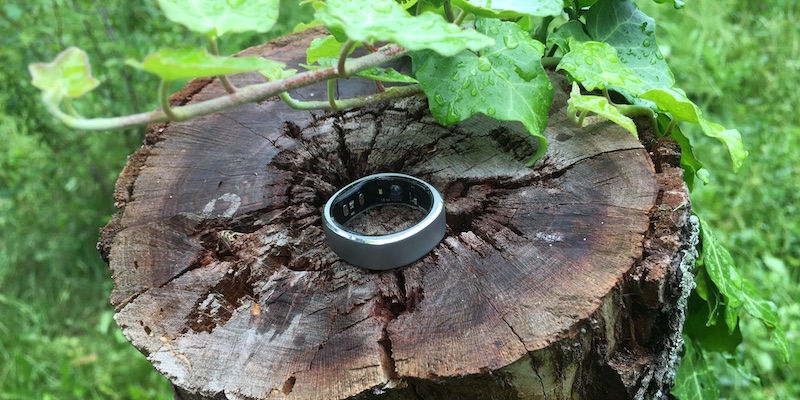
Before the ring itself is shipped, you receive a complimentary sizing kit, allowing you to determine the appropriate fit from nine different options (ring sizes 6-14). This means when purchasing, your only real decision is the colour. A perfectly fitting ring not only ensures better comfort but also leads to more accurate tracking. So make sure you choose the correct size.
The good thing is, the ring can be worn on any finger of your right or left hand. So if the size is slightly off, you can opt to wear it on a different finger or hand.
I mostly wore my ring (size 11) on my index finger, which was a comfortably snug fit. It’s worth mentioning, the ring is not omnidirectional. The green and red lights need to be on the palm side of your hand. Which can be a bit annoying as you have to look closely to make sure you are putting it the right way around.
I wish there was some sort of mark on the device, which would let you know with a glance whether the ring is positioned correctly. The company says there’s a slight concave at the top that can be used to position the top and bottom. They have adopted a tactile positioning method instead of a visual one.
It is advisable to wear the ring on the hand that is not dominant. This minimizes hand movements that could potentially lead to an exaggerated step count. The placement of the ring on the finger presents certain challenges in tracking some metrics, with step count being one of them. This is an inherent limitation because there is greater flexibility of hand movements as compared to the wrist movements when wearing a smartwatch.

As far as durability of the ring is concerned, I’ve noticed some users on social media have complained about scratches. I opted for the grey edition, which may be less susceptible to such damage as compared to the black version. Also, I have been extra careful not to mar its surface and have experienced no issues on this count. But it is interesting to see how some users have come up with innovative solutions to protect the outer surface of the ring, such as clear nail polish. It is something to be aware of.
This ring is designed for round-the-clock wear. It comes with a great IP68/5ATM rating, ensuring that it is impervious to dust and can withstand water up to a depth of 50m. Initially, I was cautious while washing my hands, but now I am fully convinced of the ring’s water-resistant capabilities. I have taken numerous showers, done the dishes repeatedly, and engaged in several swimming sessions while wearing the ring, and have encountered no issues whatsoever.
Under the Hood
Inside the RingConn smart ring lies a sophisticated set of hardware components. The device is armed with infrared, red, and green sensors, in addition to an accelerometer, which together drive its tracking features. Connectivity is facilitated through BLE 5.2, with no Wi-Fi support. Additionally, the ring incorporates EMF-Safe technology and features an airplane mode for those moments when it’s necessary to go offline.
In terms of storage, the RingConn smart ring is endowed with a memory capacity capable of retaining up to 7 days of data. This enables extensive monitoring and assessment without the hassle of frequent data transfers. Having said that, you probably will want to sync daily as this is the only way to view your metrics.
The ring establishes a connection exclusively via Bluetooth to the smartphone app, and it seems to disconnect from the phone when the RingConn app is not in active use – this is probably to conserve battery life. Upon launching the app, it takes a few moments to establish a connection and initiate data synchronization. However, once connected, the connection remains stable. During my initial testing, I observed that I had to disable the VPN on my phone for synchronization to occur. However, a later firmware update seems to have addressed this issue.
As for the presence of a vibration motor, the ring does not have one which is consistent with the majority of such devices. It is difficult to fit that sort of tech into something the size of a ring.
A week of battery life
Moving on to the all-important battery life. This is a problem with some of the options on the market.
I’m happy to report RingConn has no such issues. The device boasts a battery life of up to 7 days when fully charged, a claim that I found to be accurate in practice. It takes approximately 90 minutes to recharge the ring completely.
The charging case, which is conveniently portable and specifically tailored to the size of your ring, offers the ability to recharge the device on the go. Whenever I take a shower, I reverted to placing the ring in the case for a quick partial charge. This way, I avoided the situation of the ring reaching a nearly depleted state.
What is lacking at the moment are notifications if the ring battery is running low. The smartphone app has the ability to send notifications, but only if it is open. The company says it is working on push notifications.
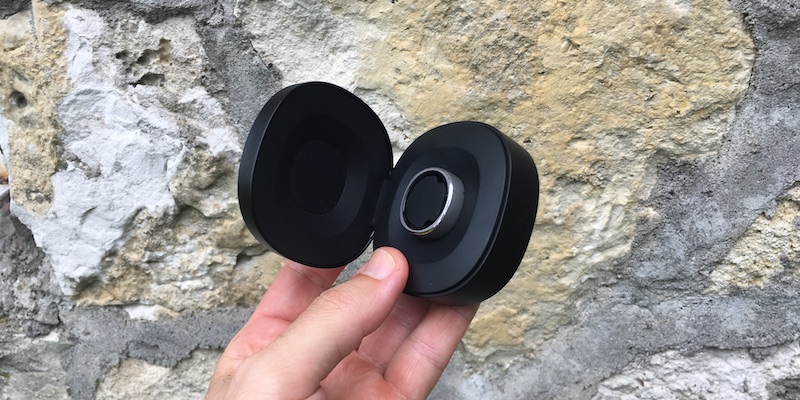
Technical specs: RingConn vs Oura Ring
Now, let’s delve into how RingConn’s technical specifications stack up against the market leader – the Oura Ring. As illustrated in the table below, RingConn is on par with its more renowned but pricier rival. Both are crafted from pretty much the same materials, and they share similar dimensions, weight, and sensors.
Additionally, both rings advertise the same battery life. However, it’s worth noting that there are numerous online reports suggesting that the Oura Ring doesn’t quite live up to its battery life claims. RingConn does. As a bonus, RingConn comes with a portable charging case, which isn’t an option with the Oura Ring. The one area where the Oura Ring has an edge as far as hardware is in its superior water-resistance.
Of course, there are differences in terms of functionality as well. The extras RingConn brings over Oura Ring are stress metrics and 24/7 tracking of heart rate variability and blood oxygen. Oura only tracks these two metrics overnight.
In terms of cost, the Oura Ring is roughly $50 more expensive than RingConn, and there’s also a $6 monthly subscription fee on top of that. Which adds up over the long term.
On the other hand, RingConn does not require a monthly subscription, and the company has stated that they have no intentions of introducing such a fee. Unfortunately, the trend of implementing monthly subscriptions among wearable brands seems to be gaining traction. Here’s hoping that RingConn remains committed to its stance.
Specification | RingConn | Oura Ring |
|---|---|---|
Materials | Durable titanium, PVD Coating, Non-allergenic, non-metallic, seamless inner molding | Durable titanium, PVD Coating Non-allergenic, non-metallic, seamless inner moulding |
Water resistance | IP68/5ATM dustproof and waterproof | up to 100m/328 ft |
Dimensions | Width: 7.8mm, Thickness: 2.6mm | Width: 7.9mm, Thickness: 2.55mm |
Weight | 3 to 5 grams (depending on ring size) | 4 to 6 grams (depending on ring size) |
Sensors | Infrared, Red and Green, temperature sensors | Infrared, Red and Green, temperature sensors |
Battery life | Up to 7 days of battery life, Full charge in 90 minutes | Up to 7 days of battery life, Full charge in 20 to 80 minutes |
Charger | Portable charging case | Charging dock USB-C |
Memory | up to 7 days of data | 16 MB |
Connectivity | BLE 5.2, EMF-Safe and Allows Airplane Mode | BLE, EMF-Safe and Allows Airplane Mode |
Price | $279 | $300 + $5.99 monthly subscription |
RingConn smart ring review: Features
As a first-time smart ring user, I was eager to test out RingConn. It promised a new form factor, away from my usual array of smart watches and bands. I’ve had a multitude of these over the years!
The smart ring has its origins in a crowdfunding campaign. Some $1,245,500 was raised via Indiegogo, which has been funneled into the RingConn’s development.

As someone who tests wearable tech products for a living, it became quickly clear to me that RingConn is not just a startup company shipping any old thing. They are delivering working rings and are committed to refining and improving them every day.
This is their first generation ring, and they’ve proven to be one of the most responsive companies I’ve come across. They offer software and firmware updates and have multiple channels for addressing and resolving user-reported issues. The one I would suggest visiting is their very active Facebook group. Updates are posted on a daily basis.
Using the ring
The initial setup process is pretty much hassle-free. First, download the smartphone app, register your details, and then follow the instructions for pairing the ring. Don’t forget to charge the ring fully before starting the setup.
Beyond that, the device doesn’t have any noteworthy settings or calibrations. It’s as simple as slipping it on and getting on with your day.
The companion smartphone app is well-crafted. There’s an ‘Insights’ screen which presents a synopsis of your activities. By tapping on any metric or swiping, you can access a wealth of detailed information on Sleep, Activity, and Stress. As the name suggests, the ‘Trends’ section offers a glimpse into your long-term progress. You have the option to organize the data by week, month, or year.
You also have the option in the app to connect to Apple Health and Google Fit. It can be found in the settings section.
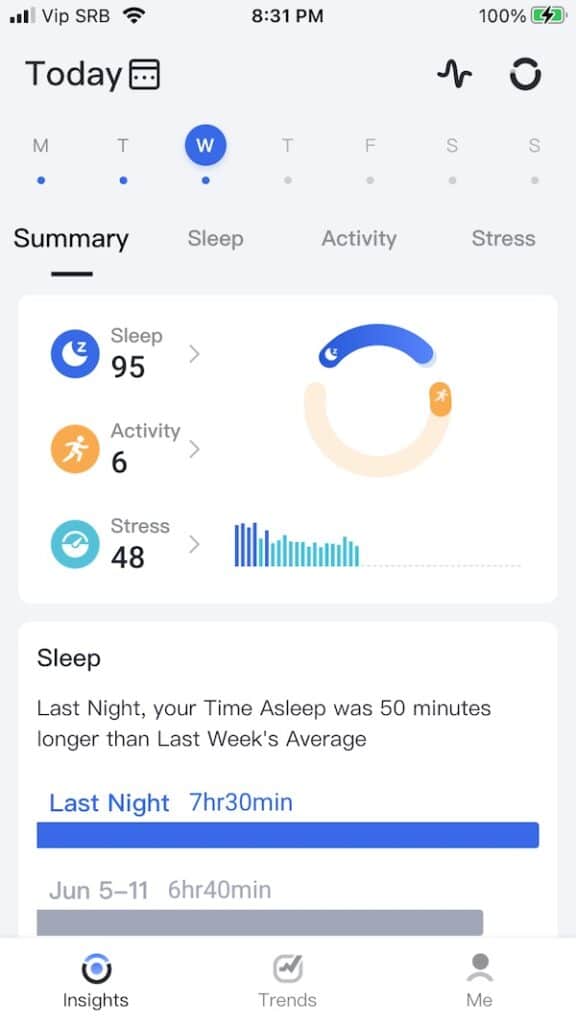

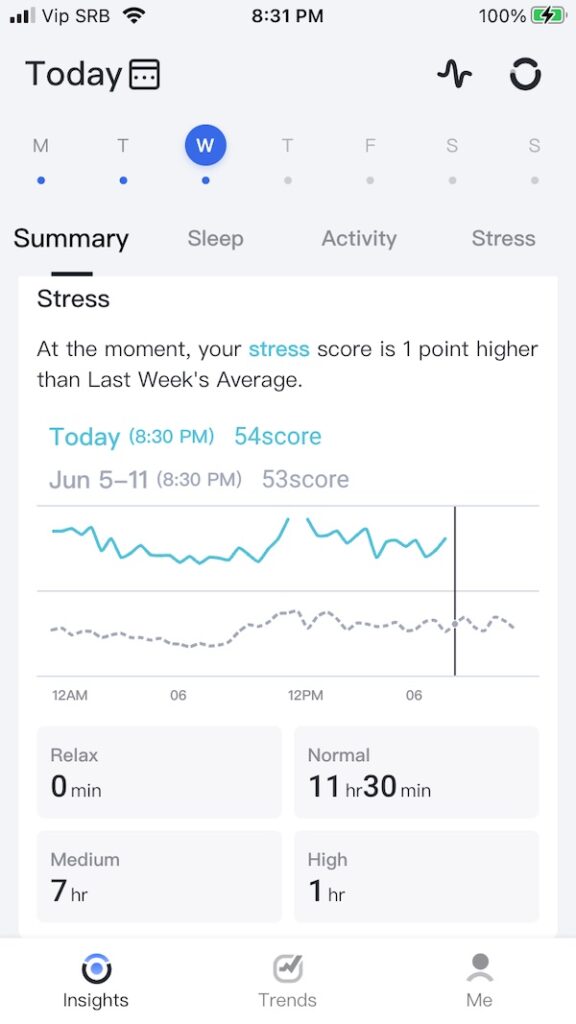
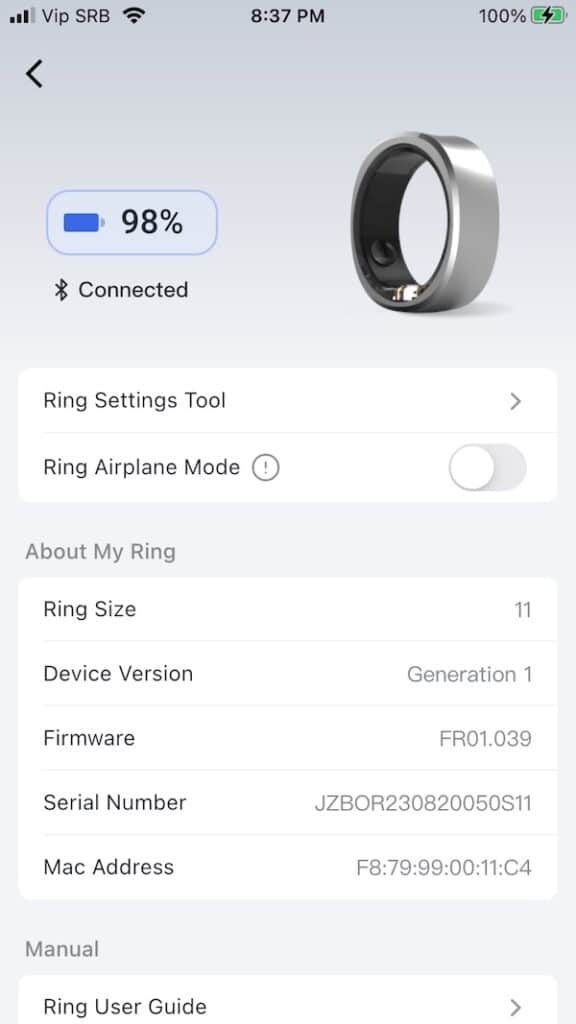
Like its rivals, the ring’s functionalities are primarily focused on recovery statistics, encompassing heart rate and heart rate variability. There is in-depth analysis of your sleep patterns, including aspects such as nap duration, total sleep time, durations of deep, REM, and light sleep, as well as sleep efficiency. The device also keeps track of SpO2 and stress levels throughout the day, attributing specific scores for early morning, morning, afternoon, and evening.
It is worth mentioning, accompanying a few of these metrics is a “score” which lets you know at a glance how you are doing for a particular day. In addition to a wealth of charts for pretty much every single data point.
You might even see this as an overflow of information. At times I did feel overwhelmed. But I would rather have too much data than too little data! Regardless, I can’t help but feel the company could make the app more user friendly by getting rid of some of the superfluous charts.

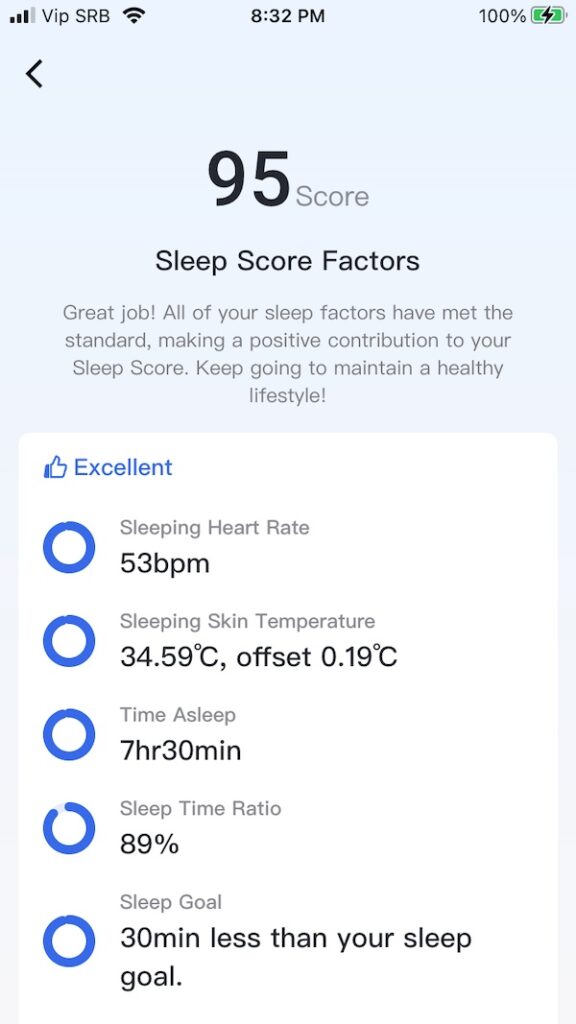


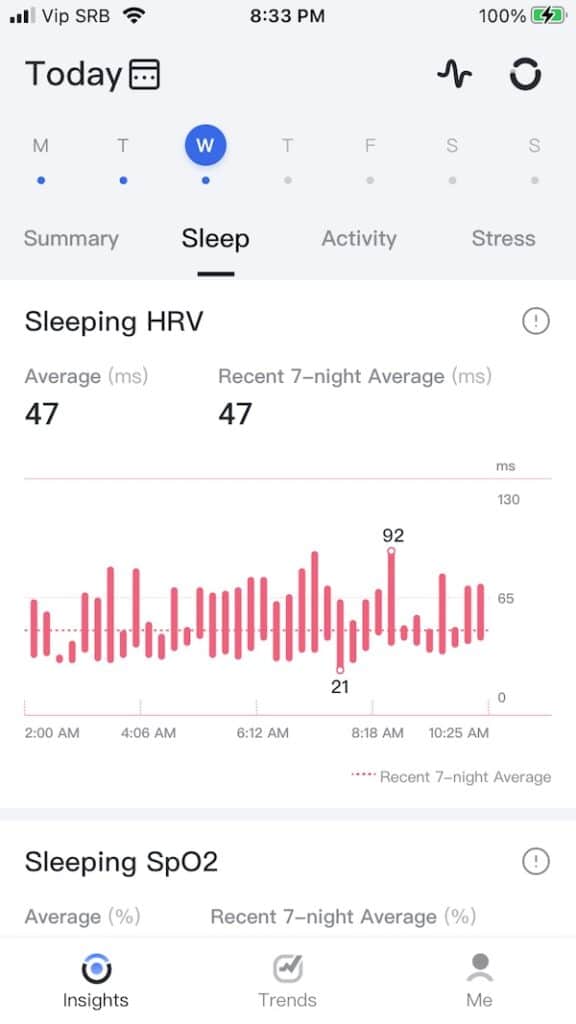

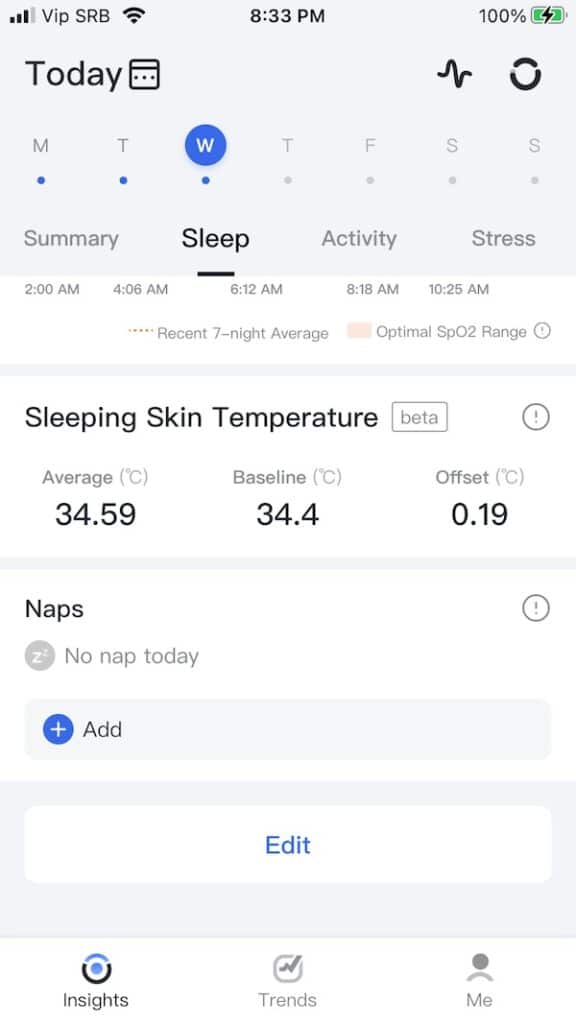
Additionally, it’s worth mentioning the skin temperature monitoring feature, which is currently in its Beta phase. This feature operates during the night, contrasting your stats against a baseline value accumulated over an extended period. The reason it doesn’t operate during the day is because there are lots of factors affecting the skin temperature in daylight, which would lead to inaccurate results.
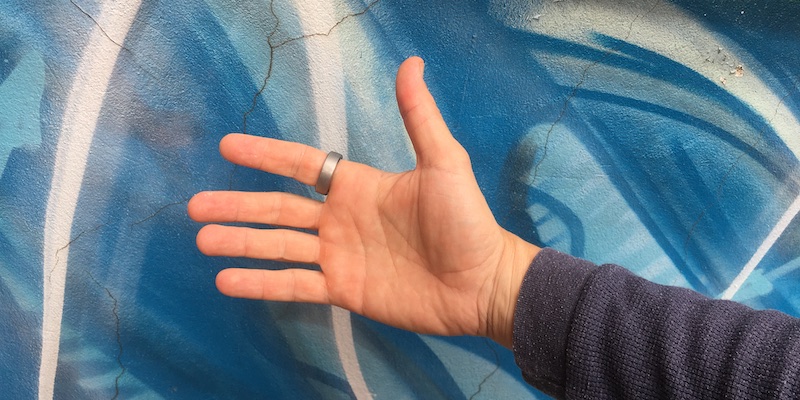
Accuracy of activity metrics
In terms of physical activity, the device provides information on step count, calories burned, as well as activity and walking distance. It’s important to bear in mind that this is an early version of the device, so certain activity metrics are still being refined. However, the company is actively rolling out updates at a rapid pace, and it is commendable that they are sharing detailed change-logs and engaging in discussions via social media and asking for feedback.
In assessing accuracy, I found that heart rate measurement during exercise to be a weak point. The readings are not as precise as those from the Garmin Forerunner 955 that I wore on my wrist. The heart rate figures were consistently lower on the RingConn compared to the Garmin.

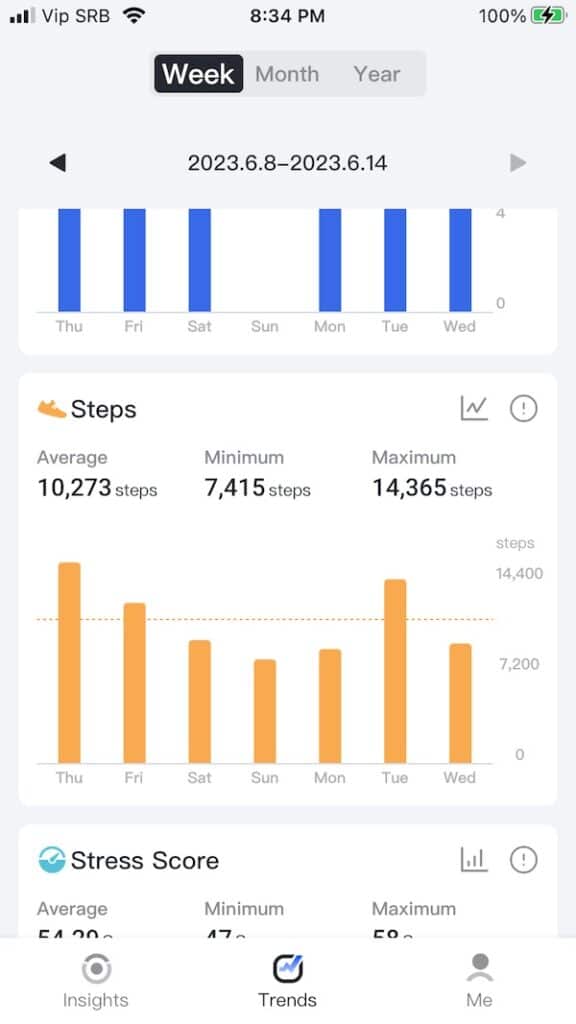
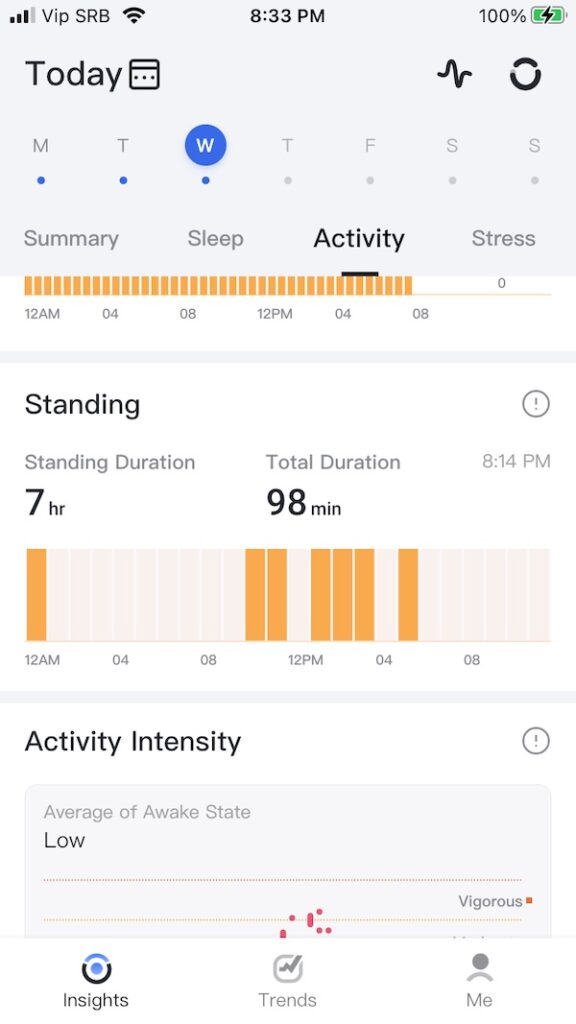
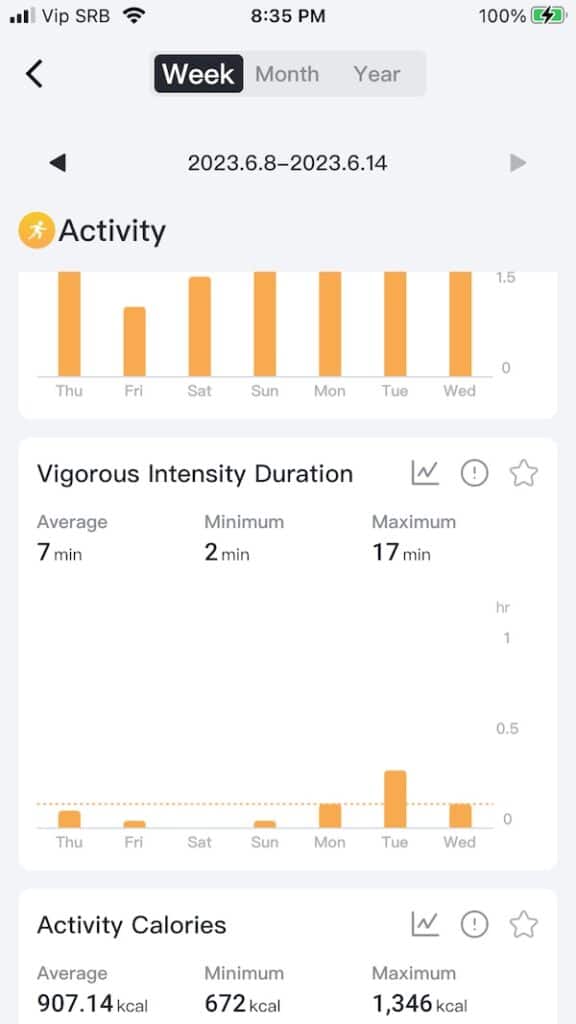
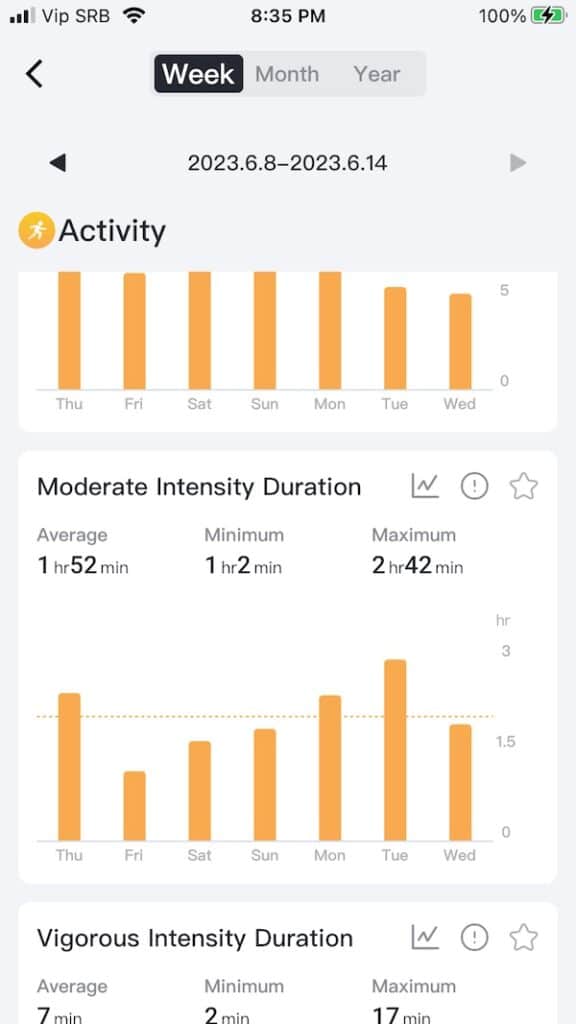

It seems that RingConn is poised to address this issue, as they have slated a firmware update for late July which is aimed specifically at enhancing the algorithm for activity metrics. I surmise that for fitness tracking, the ring may need to capture heart rate data at more frequent intervals.
As for step counting, I found it to be quite reliable. There was only a marginal deviation when I looked at my Garmin data. RingConn has stated that their step counting algorithm boasts approximately 96% accuracy compared to manual step counting, which aligns well with my personal experience.
Accuracy of recovery stats
What truly stood out to me was the precision of the recovery statistics. RingConn excels remarkably in this department, which is quite impressive, especially considering that this is a first-generation device.
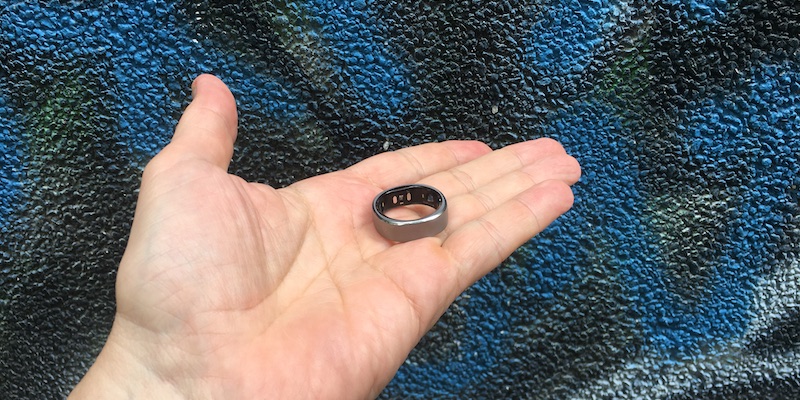
Besides the Garmin, I also sported a Whoop 4.0 on my bicep, so I made a point to meticulously compare the recovery statistics among the three devices over the course of a couple of weeks.
Below is a table that illustrates the correlation between Garmin/Whoop, Garmin/RingConn, and RingConn/Whoop with respect to nightly resting heart rate and heart rate variability. Interestingly, as depicted in the table, RingConn exhibits a significantly closer correlation with Whoop compared to Garmin.
This was particularly the case with resting heart rate values which showed a 98% correlation with Whoop. At 86%, also impressive was the correlation in terms of heart rate variability.
As far as sleep tracking, the correlation between the three devices was similar, at around 85%. However it is worth noting that RingConn and Whoop can track naps, while the Garmin doesn’t have this ability. They are not perfect but do pick up some naps. You have the option to manually enter others. The sleep figures in the table below only show nightly values and do not include this type of data.
Correlation | RingConn/Whoop | RingConn/Garmin | Whoop/Garmin |
Resting heart rate | 98% | 83% | 86% |
Heart rate variability | 86% | 79% | 70% |
Sleep (length) | 86% | 83% | 85% |
During this two-week assessment, the resting heart rate data was notably comparable among the three devices, with RingConn landing squarely in the middle at 52 beats per minute. A similar trend was observed for sleep duration, where RingConn had an approximate average difference of 13 minutes in nightly values compared to the other two devices – an impressive feat.
On the other hand, a more significant disparity was noted in the nightly Heart Rate Variability (HRV) data, with RingConn consistently recording higher values compared to both Whoop and Garmin. This discrepancy is likely attributable to variations in the methodologies employed to calculate this metric. Importantly, this difference should not be a cause for concern as the correlation in the trends of HRV – the rises and falls – was remarkably close. It is these relative changes in HRV that are considered more meaningful in analyzing the data.
Average | RingConn | Whoop | Garmin |
Resting heart rate | 52 bpm | 54 bpm | 49 bpm |
Heart rate variability | 47 ms | 28 ms | 38 ms |
Sleep (length) | 384 min | 377 min | 398 min |
If one takes Whoop 4.0 as a model of accuracy due to its high sampling rate, this level of concordance with RingConn was something I didn’t expect. Garmin and Whoop show a much larger discrepancy in their figures.
RingConn smart ring review: The bottom line
RingConn has positioned itself as a promising entrant in the smart ring space particularly for those who are keen on tracking their recovery statistics. Its sleek design ensures that it doesn’t obstruct your daily activities and its hassle-free setup makes it a user-friendly option for a wide range of consumers.
The accompanying smartphone app, while brimming with information, might be a bit overwhelming for some. But it’s commendable for the detailed insights it offers, while integration with platforms like Apple Health and Google Fit is an added bonus.
In terms of accuracy, RingConn truly shines is in its recovery statistics; with a high degree of correlation in resting heart rate, heart rate variability and sleep tracking as compared to well-established rivals such as Whoop. While the heart rate measurement during exercise needs to be improved, the company’s proactive approach in rolling out updates and engaging with the community is a good sign for future refinements.
All things considered I walked away impressed. The features, hardware, and performance of RingConn present a viable alternative to its primary competitor, the Oura Ring. Plus you get all this at a more accessible price point and no monthly subscription fees.
As the company continues to update their product, I look forward to seeing how RingConn evolves. If you’re in the market for a less obtrusive alternative to wrist wearables and have a keen interest in recovery statistics, the RingConn is a solid choice.
RingConn can be purchased for $279 on the manufacturer’s website.
*We are a review site that receives a small commission from sales of certain items, but the price is the same for you. Purchasing items by clicking on links in this article allows us to run this website. We are independently owned and all opinions expressed here are our own. See our affiliate disclosure page for more details.
Like this article? Subscribe to our monthly newsletter and never miss out!


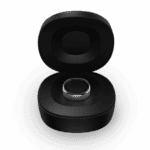
Any link or the picture of HRV status able to show RingConn having 24/7 tracking of heart rate variability and blood oxygen because other products for the consumers mostly only track these two metrics overnight? Or, is it a mistake to say so in this article?
Not a mistake. Here’s a couple of screenshots: https://ibb.co/nbzNrWL, https://ibb.co/LkKNhrn
Is this safe to wear with a pacemaker?
Best to check with the manufacturer.
The article says that “the Oura Ring is only $50 more expensive than Ringconn. This is incorrect. The top of the line oura ring (Rose Gold) which has a lot less features than Ringconn, is more than TWICE the price of a Ringconn at hovering around $490 Vs $245 for the RingConn.
I just recieved my first Ringconn and as a former Oura Ring user, I have to admit how pleasantly surprised I am with the quality of this ring. Matches or beats Oura every step of the way, straight from the unboxing with overall app functionality that is far superior to the Oura Ring.
And that’s not taking into account the monthly subscription which RingConn doesn’t have. I was pleasantly surprised as well at the quality of data. Much more competition now in the smart ring space.